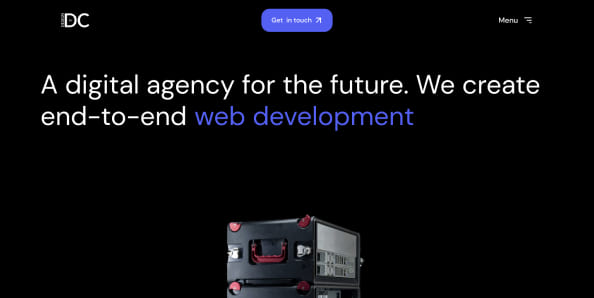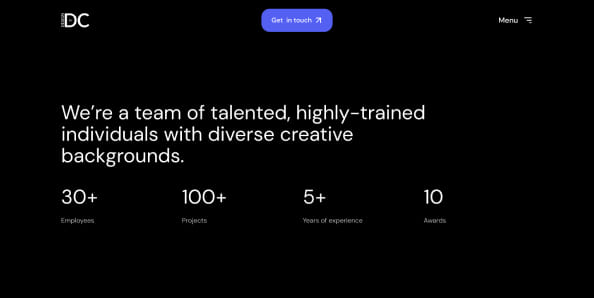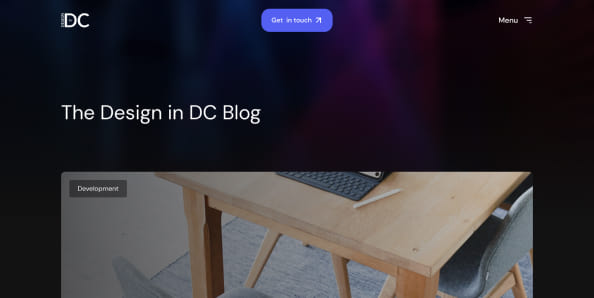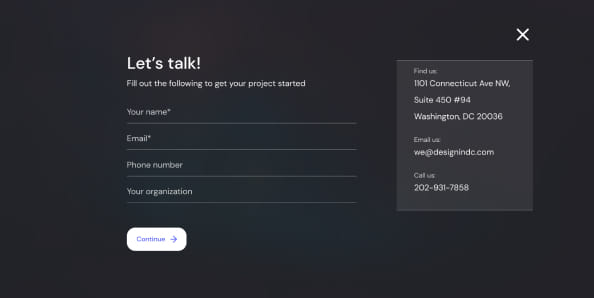How to Get More Qualified Leads with Paid Advertising
In today’s digital marketplace, paid ads are essential for businesses looking to maximize marketing potential with the highest ROI. With the right strategy, paid advertising can drive traffic, increase brand awareness, and generate qualified leads from your target audience.
Our comprehensive guide teaches you how to implement a successful paid ad campaign into your digital marketing campaign. Whether new to paid advertising or looking to enhance your existing strategy, we equip you with the knowledge and tools to achieve your business goals.
What Are Paid Ads?
A paid ad campaign allow you to post digital marketing content on platforms like search engines or social sites to reach a wider audience.
There are various types of paid ads,
- Search ads
- Display ads
- Social media ads
- Video ads
- Native advertising
Each ad type offers unique benefits and caters to different marketing objectives.
Search Ads are text-based ads that appear at the top or bottom of search results on search engines like Google. Specific keywords trigger them and are an effective way to increase visibility for your business when potential customers are actively searching for related products or services.
Display Ads are visual advertisements on websites, apps, or social media platforms. They can include images, videos, or interactive elements and are designed to grab users’ attention while they browse online.
Social Media Ads appear on social media platforms like Facebook, Instagram, Twitter, or LinkedIn. These platforms offer sophisticated targeting options, allowing businesses to reach their desired audience based on demographics, interests, or behaviors.
Video Ads appear before, during, or after online videos. They can be displayed on video-sharing platforms like YouTube or embedded within websites and apps. Video ads have the advantage of capturing users’ attention.
Native Advertising is paid content seamlessly integrated into the user’s browsing experience. It matches the form and function of the platform on which it appears, making it less intrusive and more likely to be viewed by users.
Paid ads play a crucial role in a comprehensive marketing strategy. They allow businesses to achieve three goals:
- Target specific audiences
- Increase brand visibility
- Drive traffic to their websites or landing pages.
Businesses can effectively reach their audience and achieve their desired marketing goals by leveraging the right type of ads on the appropriate platforms.
Setting Goals for Your Paid Ad Campaign
Having clear, measurable goals is essential for any paid ad campaign. Without defined objectives, measuring your ads’ success and effectiveness becomes challenging. When setting goals, aligning them with your overall marketing strategy is important.
With paid ads, businesses can improve marketing campaigns in the following ways:
- Increasing brand awareness: This goal focuses on reaching a broader audience and making your brand more recognizable. It involves maximizing impressions and exposure without necessarily aiming for immediate conversions.
- Driving website traffic: If your primary objective is to attract more visitors to your website, this goal is for you. You can increase traffic and potential engagement by optimizing your ads to encourage clicks and directing users to your website or landing pages.
- Generating leads: If your main focus is on capturing potential customers’ information, such as email addresses or contact details, lead generation is a crucial goal. By offering incentives or valuable content, you can encourage users to provide their information, expanding your customer database.
- Boosting sales and conversions: This goal is key for businesses aiming to drive immediate sales or conversions. You can increase the likelihood of immediate conversions by designing an ad that leads users directly to a purchase or sign-up page.
Choosing the right goals for your business depends on your specific needs and objectives. Prioritize what matters most to your business and align your paid ad campaign accordingly. Setting clear goals directs your campaign and establishes metrics to measure success.
Creating an Effective Paid Ad Strategy

To maximize the effectiveness of your paid ad campaign, you need to develop a comprehensive strategy that includes the following key elements:
- Understanding your target audience
- Selecting the right platforms
- Crafting compelling ad content
- Determining your budget.
Know Your Target Audience
Understanding your target audience, including paid advertising, is fundamental to any marketing strategy.
By conducting thorough market research and analyzing customer data, you can identify your ideal customer profile and tailor your ads to resonate with them. Understanding their demographics, interests, and pain points helps you create compelling ad content that speaks directly to their needs.
Choose the Right Platform
Consider the platforms your audience frequents the most and where your ads will have the greatest impact. Popular ad platforms include
- Google Ads
- Facebook Ads
- Twitter Ads
- LinkedIn Ads
- Instagram Ads
Each platform offers unique targeting options and advantages, so selecting those that align with your goals and audience is important.
Craft Content That Converts
Crafting compelling ad content is essential to grab your audience’s attention and entice them to take action. Your ad content should be engaging and relevant to your target audience through captivating headlines, persuasive copy, compelling visuals, or enticing offers. A/B testing different variations of your ads can also help you identify the most effective content.
Set Your Ad Budget
Determining your budget requires careful consideration of your marketing objectives and financial capabilities. Start by setting a budget that aligns with your goals and allows for reasonable ad spend. It’s important to monitor and adjust your budget as needed to optimize the performance of your ads.
By incorporating these key elements into your paid ad strategy, you can increase the effectiveness and impact of your campaign.
Launch Your Paid Ad Campaign

Once you have developed your strategy, it’s time to implement your paid ad campaign. For example, a Google paid ad campaign setup may look like this:
- Create a Google Ads account and select your campaign goal.
- Choose your target audience and set your budget.
- Create your ad groups and select relevant keywords.
- Write compelling ad copy and design eye-catching visuals.
- Review and launch your campaign.
- Make sure your ads meet the platform’s guidelines.
To get the most out of your ads, optimize them for maximum impact.
- Use attention-grabbing headlines, concise and persuasive copy, and compelling visuals.
- Make sure your call-to-action is clear and relevant to your campaign objective.
- A/B testing different variations of your ads can help you identify the most effective design and copy elements.
Choose an Adwords bidding strategy that aligns with your goals, whether it’s maximizing clicks, conversions, or impressions. Ad scheduling allows you to control when your ads are displayed. Consider the peak times when your target audience will likely engage and schedule your ads accordingly.
Monitoring and Adjusting Your Paid Ad Campaign
Monitoring and analyzing your paid ad campaign’s performance is crucial to optimizing its effectiveness. You can continuously improve your results by tracking key performance indicators (KPIs) and adjusting your campaign based on performance data.
Tracking and Analyzing Your Paid Ad Performance
Tracking ad performance allows you to measure your campaign’s success and identify improvement areas. It helps you understand which ads drive the most clicks, conversions, or engagement. Tools like Google Analytics provide valuable insights into ad performance, allowing you to make data-driven decisions.
Key Performance Indicators (KPIs)
Your campaign goals determine what key performance indicators (KPIs) to track. Some common KPIs include
- Click-through rate (CTR)
- Conversion rate
- Cost per click (CPC)
- Cost per acquisition (CPA)
- Return on ad spend (ROAS).
By monitoring these metrics, you can assess the effectiveness of your ads and make adjustments as needed.
Use the insights gathered from tracking and analyzing your ad performance to optimize your campaign. Consider adjusting the copy, design, or targeting if certain ads are underperforming. Experiment with different bidding strategies or ad placements to improve results. Monitor and adjust your campaign to ensure it aligns with your goals and maximizes your return on investment (ROI).
Common Pitfalls to Avoid in Paid Advertising
While paid advertising can be highly effective, there are common mistakes that businesses often make. By being aware of these pitfalls and taking steps to avoid them, you can enhance the success of your paid ad campaign. Common paid ad mistakes include
Poor Targeting
Failing to define a target audience and using broad targeting can result in wasted ad spend and low conversion rates. Take the time to understand your audience and leverage targeting options to reach the right people.
Weak Ad Content
If your ad content is not compelling or relevant to your audience, it will fail to grab their attention and drive action. Invest time and effort into creating captivating ad copy and visuals that resonate with your target audience.
Not Using Landing Pages
Sending users to a generic or poorly designed landing page can lead to high bounce rates and missed opportunities. Ensure your landing pages are optimized for conversions and aligned with your ad content.
Budget Too Small
Underestimating the budget required to achieve your goals can limit the effectiveness of your campaign. Be realistic about your ad spend and allocate your budget strategically to maximize results.
To avoid these common pitfalls, do the following:
- Conduct thorough market research
- Define your target audience
- Tailor your ads accordingly.
Focus on creating compelling ad content that resonates with your audience, and ensure that your landing pages are optimized for conversions. Set a realistic budget that aligns with your goals and closely monitor your campaign’s performance to identify improvement areas.
Maximize Your Paid Ad Potential
Paid ads are a powerful tool for businesses seeking to maximize their digital market potential. You can succeed in your paid ad endeavors by understanding the different types of paid ads, setting clear goals, creating an effective ad strategy, implementing your campaign, monitoring performance, and avoiding common pitfalls.
Remember, paid advertising is not a one-time effort but an ongoing process. Monitor, analyze, and adjust your campaigns to optimize their effectiveness and achieve your desired results. With the right strategy and a commitment to continuous improvement, you can harness the power of paid ads to drive your business forward.
Get More Leads and Grow Your Business with Design in DC
Design in DC offers comprehensive paid ad services to help you target your audience, get qualified leads, and grow your business online. Fill out our online form or call us to learn more about paid advertising services.












